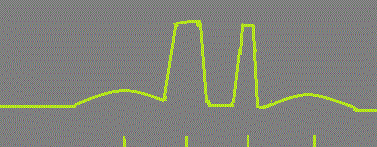Do you really need to transmit two carriers ? If possible merge the traffic together into one carrier only.
You will need to transmit two carriers if they go into different downlink beams. Ask the satellite operator what your uplink eirp is supposed to be for each carrier.
For example, for a 1 Mbit/s carrier:
EIRP required is +53 dBW (This will vary according to the uplink beam G/T and transponder gain setting, and the far end receive earth station size)
minus your antenna transmit gain = -47 dBi
equals power into your feed = +6 dBW
add waveguide loss = 1 dB
Output power from your HPA/BUC= +7 dBW.
If you transmit two such carriers the total power out = +10 dBW = 10 watts.
To keep intermodulation levels acceptable I would suggest a 20W or 25W BUC/HPA, allowing in this case 3 dB output back off.
Final determination of acceptability is based on measuring your transmit intermodulation power spectral density at the input to your feed. You need a high loss cross guide coupler connected to the spectrum analyser. Some HPA/BUCs have a monitor port. The satellite operator will examine your spectrum plot and say if you are acceptable.
Your transmit BUC/HPA outout spectrum plot will look something like this:

In this case the two carriers have the same height, and thus the same C/N but the one on the right is half the power of the other. For two carriers the intermodulation products occur at 2A-B and 2B-A frequencies. For 3 (or more carriers) the intermod frequencies are all permutations of A+B-C frequency. The IM products are three times broader than the generating carriers and the power levels depend on the generating carrier power levels and the curve of IM versus composite power for the HPA/BUC. Get the IM plot from the HPA/BUC manufacturer. Typically they plot the level of the IM products for two equal level CW carriers and tell you the IM levels relative to the two carriers at a particular input/output back off value.
Take care never to accidentally transmit CW carriers as this makes the intermods collapse into CW spikes which cause severe interference to people operating small carriers on those exact frequencies. All the other carriers filling the transponder are not shown in the above spectrum plot. All these other carrier and yours may be observed in the downlink, together with your broad intermod interference underlying the adjacent carriers. Note that your services will suffer interference from anyone operating 2 or more carriers at their uplink site. They must keep their intermods down also so that the interference into you is acceptable.
I repeat. Try to avoid multicarrier operation in an uplink HPA/BUC, if at all possible.
Best regards, Eric.



